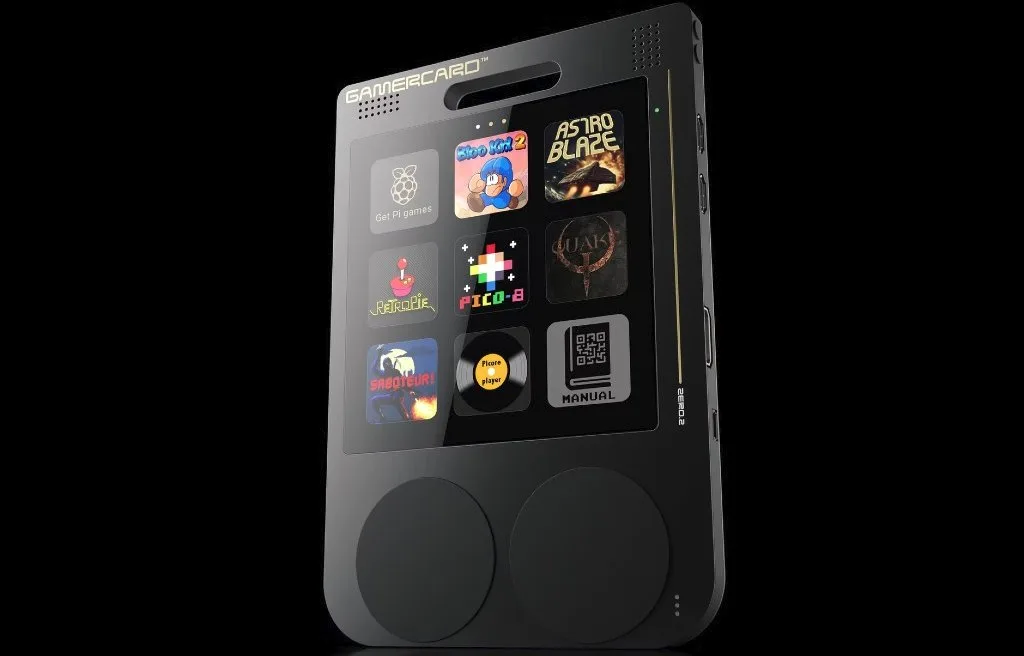How a radical design built entirely from PCBs challenges the way we think about consoles and consumer electronics
Consumer technology has long followed a predictable formula. Inside, there’s a printed circuit board (PCB) packed with chips, connectors, and wires. Outside, there’s a casing—plastic, metal, or sometimes wood—designed to protect the electronics and give the device its finished look.
But what if the casing wasn’t needed at all? What if the PCB itself was the product?
That’s the radical idea behind Grant Sinclair’s GamerCard, a device that challenges long-standing conventions in both design and manufacturing.
Breaking the mould
When I sat down with Sinclair to talk about the project, he explained that the spark came from questioning why electronics had to be hidden in the first place.
“Normally with a product, you’ve got a PCB with all the components mounted on it, and then you have some sort of casing,” he told me. “My idea was to completely do away with the casing—and make the casing out of a stack of PCBs.”

On the surface, it sounds like a shortcut. But Sinclair’s approach solves several problems at once. PCBs are already robust—he compared them to the solid feel of a Raspberry Pi board—and stacking them together creates a rigid, compact structure. That means less material, fewer manufacturing stages, and a design that feels both engineered and purposeful.
A new aesthetic
Function wasn’t the only consideration. Sinclair recalls being struck by the visual qualities of black PCBs, which gave the GamerCard a look that was at once minimalist and sophisticated.
“That’s actually a beautiful aesthetic,” he said. “A very engineered aesthetic.”
Instead of an enclosure trying to disguise the electronics, the GamerCard embraces them. Its stacked boards don’t just hold the device together; they become part of its visual identity.
More than a pretty face
Of course, the design had to do more than look good. The GamerCard’s front and back PCBs are linked, so that pressing a button on one side connects with contacts on the other. Sinclair describes the setup as “a bit like a sandwich”—layers working in harmony to form a single, cohesive product.
This integration reduces complexity. By unifying structure and circuitry, Sinclair has created a device that is as functional as it is striking.
Design as communication
When I first saw the GamerCard, one detail caught my attention: the printed text on the back of the board. Far from being decorative, it doubles as instructions for using the console.
It’s a small touch, but it underscores Sinclair’s philosophy—every part of the GamerCard has a purpose. Nothing is wasted, and even the instructions are built into the product itself.
“Yeah, exactly,” he said with a smile when I pointed this out.
Redefining the rules
The GamerCard is more than a piece of hardware—it’s a statement. By turning the PCB into both structure and skin, Sinclair questions the assumptions that underpin how we build consumer electronics.
In doing so, he’s not just saving on materials and design time. He’s proposing a different way of thinking about technology altogether: leaner, smarter, and unapologetically engineered.
You can see a video of Grant Sinclair discussing the GamerCard on our Patreon — free trial is available.
Affiliate Disclosure: Some of the links in this post may be affiliate links, which means I may earn a small commission if you make a purchase through those links. This comes at no extra cost to you. Thank you for your support!
Christian Cawley is a writer and editor who covers consumer electronics, IT, and entertainment media. He has written for publications such as Computer Weekly, Linux Format, MakeUseOf.com, and Tech Radar.
He also produces podcasts, has a cigar box guitar, and of course, loves retro gaming.







